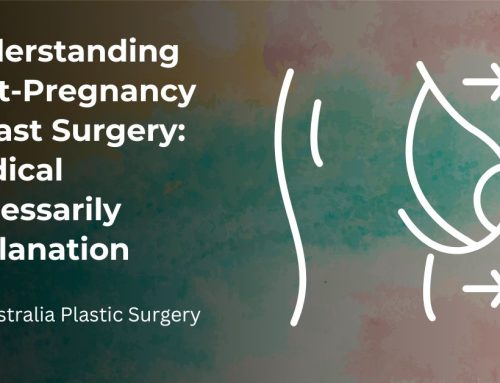Facelift surgery, also known as rhytidectomy, is a highly sought-after procedure for individuals looking to reduce the visible signs of aging and restore a youthful appearance. While the results can be transformative, it’s important to fully understand both the risk and benefits of facelift surgery before proceeding. This article explores the advantages and potential complications of facelift surgery Sydney, with particular emphasis on the ethical and regulatory standards that guide cosmetic surgeries in Australia,
What is Facelift Surgery?
Definition and Purpose
Facelift surgery is a cosmetic procedure designed to tighten sagging skin and underlying tissues of the face and neck. The goal is to reduce wrinkles, lift sagging jowls, and rejuvenate the overall facial appearance. In some cases, a facelift may also include a neck lift to address sagging skin or excess fat in the neck area.
A facelift surgery can refine facial balance, restoring proportion between the cheeks, jawline, and neck. Combining a facelift with procedures like eyelid surgery or a brow lift can create more comprehensive, harmonious results.
If you’re unsure whether a neck lift or facelift surgery best suits your goals, here our detailed guide explains the key differences and expected outcomes.
Who Is a Suitable Candidate?
Ideal candidates for a facelift surgery Sydney are typically individuals between the ages of 40 and 70, although those with more advanced aging can also benefit. Candidates often have sagging skin, jowls, deep facial lines, and a loss of facial volume. The best candidates are those in good overall health, with realistic expectations of the procedure’s outcomes.
Types of Facelift Procedures
- Traditional Facelift: The most comprehensive technique that involves lifting and repositioning the skin, as well as tightening the underlying tissues.
- Mini Facelift: A less invasive version of the traditional facelift, often focused on the lower face or neck, with smaller incisions.
- Neck Lift: Specifically targets the neck area, addressing sagging skin or excess fat beneath the chin.
- Endoscopic Facelift: A minimally invasive approach, often used for less significant sagging, involving smaller incisions and a camera to guide the surgery.
Benefits of Facelift Surgery
Facelift Surgery Help Restoring a Youthful Appearance
One of the primary benefits of facelift surgery is the rejuvenation of the face. The procedure can reduce visible signs of aging such as deep wrinkles, jowls, and loose skin, providing a smoother, more youthful look. A facelift can also enhance facial contours, creating a more defined jawline and neck.
Facelift Surgery Enhanced Self-Confidence
A facelift surgery often leads to a significant boost in self-esteem. Many patients report feeling more confident and satisfied with their appearance after the surgery. Feeling younger and more vibrant can positively affect personal and professional interactions.
Long-Lasting Results After Facelift Surgery
Facelift surgery offers long-lasting benefits. While the procedure cannot stop the aging process, the results can last anywhere from 5 to 10 years, depending on factors such as skin type, lifestyle, and the degree of aging. This makes it a worthwhile investment for many seeking significant and durable results.
Improvement in Facial Proportions and Contours
Facelift surgery can dramatically improve the balance and proportions of the face, creating more harmonious features. The procedure can smooth out facial wrinkles, tighten the skin, and lift areas of the face that have sagged with age. In addition to tightening skin, it often improves the contours of the jawline, neckline, and mid-face.
Customisable Results
Facelift surgery can be tailored to meet each individual’s specific needs. Whether focusing on the lower face, mid-face, or neck, a facelift can address the most relevant concerns, ensuring the most natural and balanced results. In some cases, a facelift can be combined with other procedures, such as eyelid surgery or brow lifts, for more comprehensive rejuvenation.
Risks and Complications of Facelift Surgery
Scarring
Facelift surgery involves incisions, and while modern techniques strive to minimise visible scars, some degree of scarring is inevitable. Incisions are typically placed along the hairline, around the ears, and under the chin, making them less noticeable. However, in some cases, scars may be more noticeable or take longer to heal. Patients should be fully informed about the potential for scarring during the pre-surgery consultation.
Infection
Infection is a potential risk with any surgery, including facelifts. Post-surgical infections are rare but can occur at the incision sites. Proper aftercare, including following the surgeon’s instructions on wound care and taking prescribed antibiotics, helps mitigate this risk. It’s essential that patients understand the signs of infection, such as increased redness, swelling, or discharge, and seek prompt medical attention if any symptoms arise.
Anesthesia Risks
Facelift surgery is typically performed under general anesthesia. As with any procedure involving anesthesia, there are risks, including allergic reactions, breathing problems, or complications related to pre-existing medical conditions. A thorough pre-surgical evaluation helps to minimise these risks. Patients should be clear about their medical history and any allergies during their initial consultation.
Nerve Damage
Although rare, nerve damage during facelift surgery can result in temporary or permanent changes in sensation or movement in the face. In some cases, this may cause weakness, numbness, or drooping on one side of the face. Skilled surgeons minimise this risk through advanced techniques, but patients must be informed of this potential outcome before proceeding with surgery.
Hematoma and Blood Collection
A hematoma, or blood collection under the skin, can sometimes occur after facelift surgery. This is generally treatable but may require additional surgical intervention to drain the blood and reduce pressure. Proper care and monitoring during the recovery period are essential to minimising this risk.
Uneven Results or Asymmetry
While most facelift surgeries result in symmetrical and balanced outcomes, there is a slight risk of uneven results. This could involve asymmetrical lifting of the face or uneven healing. It’s important to choose a qualified surgeon who has a proven track record of achieving balanced results, as recommended by the Australian Society of Plastic Surgeons.
Swelling and Bruising
Post-operative swelling and bruising are common and can last for several weeks. These effects are usually temporary, but patients should be prepared for a period of visible recovery. Ice packs, proper rest, and following the surgeon’s post-operative instructions can help reduce swelling and bruising.
Surgical Complications
Like any surgery, facelift procedures come with the potential for complications such as blood clots, skin necrosis (death of skin tissue), or delayed healing. These complications are rare but can occur, which is why patients must be thoroughly assessed during the pre-surgical consultation.
Discomfort and Pain During Recovery
After surgery, patients may experience some discomfort, tightness, or pain in the face and neck. This discomfort can be managed with prescribed pain relievers, and the surgeon will guide the patient through the recovery process. The level of discomfort varies based on the individual and the extent of the surgery.
Emotional and Psychological Impact
Although facelift surgery can result in a significant improvement in appearance, patients may feel emotional disappointment if the results don’t meet their expectations. It’s important to provide psychological support and counseling both before and after facelift surgery to help manage any potential emotional impacts.
What to Expect During Recovery from Facelift Surgery Sydney
Recovery after facelift surgery Sydney varies from patient to patient but typically follows these stages:
-
Mild swelling and bruising in the first 7–14 days
-
Return to work within two weeks (depending on your comfort level)
-
Final results become visible after 3–6 months as tissues settle naturally
Following your surgeon’s aftercare guidance — including rest, gentle movement, and proper incision care — will support faster healing and more refined results.
How to Choose a Qualified Surgeon for Facelift Surgery
When choosing a surgeon for facelift surgery in Sydney, it is essential to verify their qualifications. Look for a certified surgeon . Consult with the surgeon about their experience, review patient testimonials, and examine before-and-after photos of previous surgeries. A thorough consultation will help you assess whether the surgeon aligns with your expectations and requirements.
At Australia Plastic Surgery, all procedures are performed by AHPRA-registered, FRACS-qualified surgeons with decades of experience in facial rejuvenation. Our accredited Sydney surgical facilities operate under strict safety protocols, ensuring your procedure meets the highest standards of medical ethics and care.
Conclusion
Facelift surgery offers many benefits, including a more youthful appearance and improved self-confidence, but it’s important to understand the risks associated with the procedure. By choosing a qualified, experienced surgeon in Sydney , patients can ensure they make an informed decision. Make sure to discuss all aspects of the plastic surgery with your plastic surgeon and ask about the potential risks, benefits, and recovery process. A clear understanding will help ensure a successful outcome and a positive surgical experience.
Would you like to know more about facelift surgery in Sydney or are you interested in undergoing such a procedure? Call Australia Plastic Surgery today on 02 9561 0200 or 1300 004 008 and consult with one of our expert plastic surgeons in Sydney today















